David Suzuki's Blog, page 32
July 14, 2016
The future of hydro in a warming world
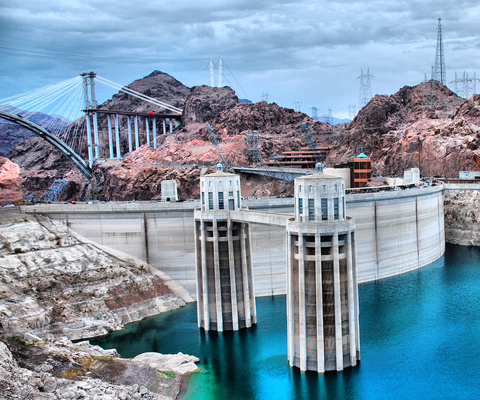
The Hoover Dam on the Colorado River is operating at 30 per cent capacity, and new turbines have to be installed at lower elevation because of low precipitation and drought. (Credit: Allan via Flickr)
People have harnessed energy from moving water for thousands of years. Greeks used various types of water wheels to grind grain in mills more than 2,000 years ago. In the late 1800s, people figured out how to harness the power to produce electricity. Throughout the 20th century and into the 21st, hydropower has expanded, producing about 17 per cent of the world's electricity by 2014 and about 85 per cent of renewable energy -- and it shows no signs of slowing.
According to the online magazine WaterWorld, "An expected 3,700 major dams may more than double the total electricity capacity of hydropower to 1,700 GW within the next two decades," -- including in my home province of B.C., where the government has started a third dam on the Peace River at Site C. "Hydropower is the most important and widely-used renewable source of energy," the U.S. Geological Survey says.
But how "green" is hydropower, and how viable is it in a warming world with increasing water fluctuations and shortages? To some extent, it depends on the type of facility.
The Center for Climate and Energy Solutions notes some large dams are used mainly for water storage or flood control with power generation an additional function, while some are used primarily to generate electricity. Small hydro such as run-of-river is installed on running water and doesn't use water stored in reservoirs. Pumped storage facilities don't generate additional energy, but store energy by pumping water from a lower reservoir to a higher one when demand and price are low, sometimes using renewable energy, and release water through turbines when price and demand are high. All have varying environmental impacts.
One of the biggest trade-offs with large-scale hydro facilities is that building them often means flooding land used for farming and human communities. Damming rivers also impedes fish -- even with technologies like fish ladders -- and can harm wildlife habitat and alter river temperatures, dissolved oxygen levels and flows. And while hydropower creates fewer pollution and climate problems than fossil fuel power, it isn't entirely clean. Clearing vegetation to build a dam and flood land can release greenhouse gases. And as vegetation decays and water levels fluctuate, methane -- a greenhouse gas far more potent than carbon dioxide -- can build up and escape from reservoirs.
Ironically, although hydropower is seen as an energy source that helps slow global warming, in many areas its viability is threatened by climate change. Rising greenhouse gas emissions and a warming world affect the entire hydrological cycle -- surface and ground water, glaciers, precipitation, runoff and evaporation. Shifting precipitation patterns and increased droughts are changing water levels in rivers and behind hydro dams.
The massive Hoover Dam on the Colorado River is operating at 30 per cent capacity, and new turbines have to be installed at lower elevation because of low precipitation and drought. In Nepal, "low water levels rendered a brand-new dam project ineffective and cut off the water supply farther downstream," said John Matthews, director of fresh water and adaptation at Conservation International, in Scientific American.
Matthews and co-authors of a study in the journal PLoS Biology wrote that climate change puts 40 per cent of hydro development investments at risk. They recommend an approach to dams and hydro that takes climate change into account, by building projects in stages so adjustments can be made as more is known about climate patterns, or by "building with nature" rather than on top of it.
Meanwhile, as more environmentally benign power technologies become increasingly cost-effective and viable, the U.S. is removing older dams, many of which don't have fish ladders, because costs to maintain and repair them are too high, as are environmental impacts.
Hydropower will remain part of the clean-energy equation, but we need to find the least disruptive, most efficient methods. Scientist Peter Gleick, president and cofounder of California's Pacific Institute, says the key to supplying energy to growing populations in a warming world will be to use a diversity of power sources. "We need to design our energy systems to be resilient in the face of growing uncertainty about technology and climate and national security and all of the factors that affect energy," Gleick told online magazine Slate.
Hey! Want more DSF? Join David Suzuki on Facebook

July 12, 2016
How to make laundry soap
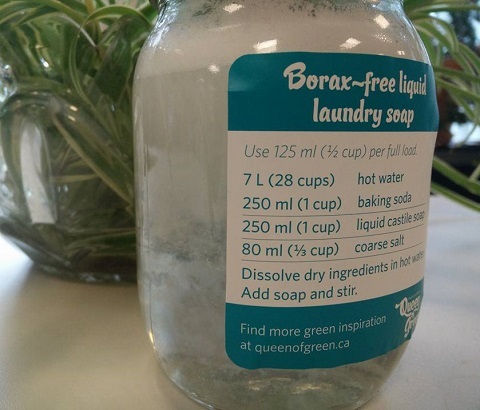
Bring costs and waste down: Buy ingredients for this recipe in bulk! (Credit: Lindsay Coulter)
I've been making laundry soap for a decade. It's cheaper than store-bought eco-friendly options and works just as well. I make this recipe once a month:
Liquid laundry soap recipe
Preparation time: 10 minutes or less
Yield: seven litres
Shelf life: six months
Ingredients:
7 L (28 cups) hot water
250 ml (1 cup) baking soda
250 ml (1 cup) liquid castile soap
80 ml (1/3 cup) salt
Instructions:
Add dry ingredients to hot water (I reuse a pail). Stir to dissolve. Add liquid castile soap last. (Choose unscented. Or try those scented with essential oils.) Stir. Add 125 to 250 ml (½ to 1 cup) per load.
Bring costs and waste down: Buy ingredients in bulk!
Does this recipe work in HE machines?
Yes, so I've heard. (I don't have an HE machine myself...yet.) This recipe's mostly water with a low-sudsing soap. You can also try my other laundry soap recipes, one liquid and one dry.
Does this recipe work, even on stains?
Yes. But its effectiveness will vary due to:
Water hardness
How soiled your laundry is
Your machine
I use a stain stick for tough stains. Find eco-friendly ones at organic grocers and health food stores. (I'm working on my own recipe. It's a mashup of green cleaning know how and cold-process soap making skills!) Or, try these DIY stain solutions.
What's the difference between soap and detergent?
Soaps are water-soluble fatty acids salts treated with a strong alkali, lye.
Detergents contain one or more surfactants. They're less finicky to water hardness than soap and often don't form a film. Most are petrochemicals (made from petroleum) and/or oleochemicals (from fats and oils).
What's water hardness?
It's mineral salts in your water: calcium, magnesium and sometimes iron and manganese. They react with soap to form film or scum.
If you have hard water (view map), add more soap. Some of the soap or detergent binds with the minerals. Instead of cleaning your clothes, it gets washed down the drain.
What about static cling?
Add 125 ml (1/2 cup) white vinegar to the rinse cycle. (Note: I'm not sure how this works in hard water. Comment on this blog to let me know!) Avoid scented dryer sheets. Try wool dryer balls.
What's the most effective "green" laundry tip you've tried?
I'll compile your tips and post them in a future blog. And I'll mail you a sheet of stickers to label your homemade products!
Sincerely,
Lindsay Coulter, a fellow Queen of Green
Hey! Want more DSF? Join David Suzuki on Facebook

July 7, 2016
Help endangered killer whales

With only 83 southern resident killer whales left, they're considered one of Canada's most endangered animals. Protecting these magnificent creatures couldn't be more urgent. We have until August 14, 2016, to make some noise to protect orcas. The government needs to hear from you through its Species at Risk registry.
Hey! Want more DSF? Join David Suzuki on Facebook

Dark earth could herald a bright future for agriculture and climate
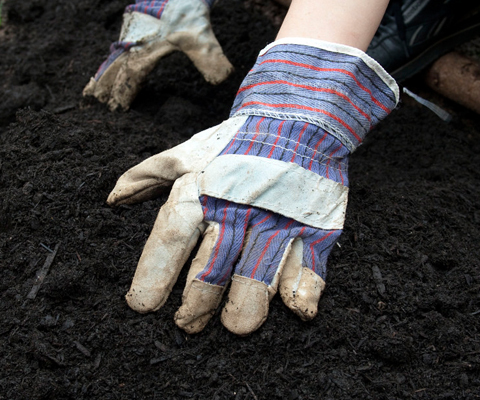
(Credit: Eden Graham via Flickr)
Feeding more than seven billion people with minimal environmental and climate impacts is no small feat. That parts of the world are plagued by obesity while starvation is rampant elsewhere shows part of the problem revolves around distribution and social equity. But agricultural methods pose some of the biggest challenges.
Over the past half century, the world has moved increasingly to industrial agriculture -- attempting to maximize efficiency through massive, often inhumane livestock operations; turning huge swaths of land over to monocrops requiring liberal use of fertilizers, pesticides and genetic modification; and reliance on fossil fuel-consuming machinery and underpaid migrant workers. This has contributed to increased greenhouse gas emissions; loss of forests and wetlands that prevent climate change by storing carbon; pollution from runoff and pesticides; antibiotic and pesticide resistance; reduced biodiversity; and soil degradation, erosion and loss.
The "solution" offered by many experts is to double down on industrial agriculture and genetic modification. But doing so ignores how natural systems function and interact and assumes we can do better. History shows such hubris often leads to unexpected negative results. Others are attempting to understand how to work within nature's systems, using agroecological methods.
One promising development is the renewed interest in a soil-building method from the distant past called "dark earth" or "terra preta," which involves mixing biochar with organic materials to create humus-rich soil that stores large amounts of carbon. In the book Terra Preta: How the World's Most Fertile Soil Can Help Reverse Climate Change and Reduce World Hunger, Ute Scheub and co-authors claim increasing the humus content of soils worldwide by 10 per cent within the next 50 years could reduce atmospheric CO2 concentrations to pre-industrial levels.
Dark earth's benefit to climate is just one of its many exciting possibilities. It also enhances soils so they produce higher yields, helps retain water and prevents erosion. It's more alive with biodiverse micro-organisms, making it easier for crops to adapt to changing conditions. And it's a good way to recycle nutrient-rich food scraps, plants wastes and even human and animal urine and feces, rather than allowing them to pollute soil, water and air through burning and runoff.
Biochar is a form of charcoal made via pyrolysis -- heating organic wastes in a low-oxygen environment. According to Scheub, "If you pyrolyze organic wastes, up to 50 percent of the carbon, which plants have extracted from the atmosphere in the form of carbon dioxide, is converted into highly stable carbon, which can persist in soils for thousands of years." As well as carbon, biochar retains nutrients like nitrogen and phosphorous, and because it's porous, adding it to soils and compost helps them store nutrients and water.
Western scientists first studied terra preta in 1874 when Canadian-born Cornell University professor Charles Hartt and his team found patches of dark, fertile soils, several metres deep, along parts of South America's Amazon River where earth is normally low in nutrients and organic matter. Later archeological research determined the soils were created by human communities up to 5,000 years ago.
Scientists have since shed more light on the technique. Because the ancient practice is still employed in Liberia and Ghana, Africa, scientists from Sussex, Cornell and other universities were recently able to compare dark earth to soils nearby where the technique isn't used. They found dark earth contained 200 to 300 per cent more organic carbon and can support "far more intensive farming."
Cornell University lead author Dawit Solomon was surprised that "isolated indigenous communities living far apart in distance and time" achieved similar results unknown to modern agriculturalists. "This valuable strategy to improve soil fertility while also contributing to climate-change mitigation and adaptation in Africa could become an important component of the global climate-smart agricultural management strategy to achieve food security," he said.
Scheub and her co-authors say the technique can be used on any scale, from home and community gardens to large farms. Terra Preta includes instructions for creating biochar and enhanced soils, but cautions that organic wastes should be used rather than valuable forest products.
Dark earth won't solve all our climate problems, but combined with reducing fossil fuel use, it could make a huge difference while addressing many agriculture, food security and hunger issues.
Hey! Want more DSF? Join David Suzuki on Facebook

35,000 signatures calling for Grassy Narrows mercury cleanup delivered by canoe to Queen's Park
Environmental and labour leaders echo calls from Grassy Narrows First Nation for immediate river cleanup
TORONTO, ONTARIO -- (Marketwired - July 7, 2016) - Prominent labour and environmental leaders delivered a canoe filled with more than 35,000 letters and petitions calling on Ontario Premier Kathleen Wynne to immediately commit to clean up Grassy Narrows' mercury-contaminated river.
"Last month Grassy Narrows youth and elders travelled 1,700 kilometers to call on Premier Wynne to clean up the mercury in their river. Today we carry the voices of 35,000 people who echo Grassy Narrows' cry for justice. Clean the river, clean it now," said Rachel Plotkin, Ontario Science Projects Manager, David Suzuki Foundation.
The signatures delivered today were collected from petitions and online actions from Leadnow.ca, the David Suzuki Foundation, Amnesty International, and the Council of Canadians.
"Premier Wynne has said cleaning up the mercury is too risky, but her government has failed to produce any evidence showing the methods proposed by scientists are unsafe. It's time for Ontario to stop making excuses and commit to cleaning the river," said Amara Possian, Leadnow.ca Campaign Manager.
On Monday, the Toronto Star reported that the government could provide no evidence to suggest that a "clean clay suspension" remediation effort would be unsafe, despite repeated comments from the Premier and senior government officials citing concerns about the safety of a cleanup as the reason for the province's inaction.
"Indigenous people deserve to live and work in safe communities. If non-Aboriginal people and families were being poisoned, there is no doubt there would have been action a long time ago. The decades of inaction by successive governments is a stain on Canada's human rights and environmental record," said Marie Clarke Walker, Executive Vice-President, Canadian Labour Congress.
Decades ago, 9,000 kg of mercury was dumped into the English-Wabigoon River system, which flows into the Grassy Narrows First Nation. The poisoning destroyed a local economy based on fishing, and caused an ongoing health crisis.
"People are dying and getting sick, and scientists tell us it's possible to make the river safe again. So why is it taking so long for the government to commit to a full river clean-up?" said Mark Calzavara, Ontario-Quebec Organizer, Council of Canadians.
"There are 107 MPP elected to Queen's Park. Do you think they would ignore it if people in their home towns were being poisoned?" asked CUPE Ontario Aboriginal Council chair Dawn Bellerose. "How can the Premier apologize for the past while turning a blind eye to the atrocities happening under her own watch? It's time to bring an end to government sanctioned abuses of First Nations people. It is time for Premier Wynne to deliver more than pretty words."
Media Contact: Jolan Bailey - National Organizer, Leadnow.ca - jolan@leadnow.ca - 604-441-6916
Hey! Want more DSF? Join David Suzuki on Facebook

July 6, 2016
How to treat a mosquito bite

Get quick itch relief from a few familiar ingredients you have in your pantry: baking soda, vinegar and Epsom salts. (Photo credit: Nicole Bridger)
To prevent being "treeprived," you grab yourself some Vitamin "N" and end up with a mosquito bite. (Living in Canada, we're fortunate an annoying itch is likely all we'll get...)
This shows:
You need to brush up on mosquito bite prevention techniques.
You taste better. (One study shows skeeters find blood type O more enticing than A.)
You're an animal.
I brush up on mosquito bite remedies every spring or summer I travel to Alberta to visit family and friends. (In Vancouver many people don't even have screens on windows!)
Get quick itch relief from a few familiar ingredients you have in your pantry:
Vinegar
Dab a little white or apple cider vinegar on a cloth. Apply to bite. Reapply as needed or dampen an organic cotton ball in vinegar and tape it on.
Baking soda
Add enough water to a tablespoon of baking soda to make a paste. Apply to bite. Allow to dry. (Many bug bite relief products are five per cent baking soda.) You can also add 1/2 cup of baking soda to a warm bath.
Epsom salts
Add one cup of Epsom salts to enough tap water to dissolve them. Soak a cloth in the solution and dab onto bites. Or add one to two cups Epsom salts to a bath.
Note: Find Epsom salts at most grocery or drug stores. Read the ingredient list to avoid added scent. It's often a toxic mix of ingredients labelled as "fragrance" or "parfum."
What's your simple, effective bite relief solution?
Sincerely,
Lindsay Coulter, a fellow Queen of Green
Hey! Want more DSF? Join David Suzuki on Facebook

Environmental groups head to court over pollinator-killing pesticides
Neonicotinoid pesticides have been linked to mass bee die-offs and declining pollinator populations.
TORONTO, July 6, 2016 -- Environmental groups are headed to court in a bid to protect pollinators from a harmful class of pesticides.
The David Suzuki Foundation, Friends of the Earth Canada, Ontario Nature and the Wilderness Committee have been tracking the scientific evidence linking neonicotinoid pesticides and pollinator deaths. Now, they say it's time for Canada to stop ignoring the risks.
Ecojustice lawyers representing the groups argue that a number of pesticides containing two neonicotinoid active ingredients (Clothianidin and Thiamethoxam) are unlawfully registered in Canada.
They allege that the Pest Management Regulatory Agency (PMRA) failed to live up to its legal responsibilities as a regulator. Specifically, the Agency failed to ensure for more than a decade that it had the scientific information necessary to determine the pesticides' environmental risks, in particular risks to pollinators. The federal Pest Control Products Act requires the PMRA have "reasonable certainty" that a pesticide will cause no harm to the environment before registering it.
They also point to a number of Thiamethoxam-based pesticides that have been registered for years in Canada without ever being subject to public consultation required by the Act.
The environmental groups are asking the court to declare the registrations of these Clothianidin and Thiamethoxam-based pesticides invalid. Only validly registered pesticides can be used in Canada.
Ecojustice lawyer, Charles Hatt, said: "The PMRA has taken a see-no-evil, hear-no-evil, speak-no-evil approach by repeatedly registering these neonicotinoid pesticides without important scientific information on their risks to pollinators."
Anne Bell, Director of Conservation and Education at Ontario Nature, said: "Pollinators are key players in our ecosystems, and their declines are extremely concerning. A stunning variety of plants -- including fruits, vegetables, nuts, and 90 per cent of flowering plants -- need pollinators to reproduce and thrive."
Gwen Barlee, National Policy Director at the Wilderness Committee, said: "Pollinator populations are plummeting and the science tells us that neonicotinoids play a big role in that decline. So why is the PMRA continuing to allow their use and sale? We need to get these bee-killing pesticides out of Canadian agriculture."
Beatrice Olivastri, Chief Executive Officer at Friends of the Earth, said: "Decision-makers in the European Union, France, and even Ontario have already opted to heavily restrict the use of neonicotinoids. It's time for Canada to join this push to protect pollinators."
Dr. Faisal Moola, PhD, Director General of Ontario and Northern Canada at the David Suzuki Foundation, said: "The Province of Ontario recently brought in strong restrictions on the use of dangerous neonicotinoid pesticides in agriculture. We're hoping that our court case will compel the federal government to take similar action in response to widespread public concern over the fate of pollinators in Canada."
About neonicotinoids:
• Neonicotinoids, or neonics, are the most-widely used class of insecticides worldwide.
• Neonics are systemic pesticides. Once applied to a plant they spread throughout its tissues - from roots, to leaves, to pollen. Neonics cannot be washed or peeled off of crops.
• Research suggests neonics have played a role in mass bee die-offs, and that the pesticides harm bees' metabolic, immune, and reproductive functions, and negatively affect bees' foraging and homing behaviour.
• Neonics can leach into the soil and water, where they can persist in the environment, exposing a wide range of land and water animals to toxic effects.
Find a Q&A here
Notices of Application
• Clothianidin
• Thiamethoxam
For media inquiries, please contact:
Charles Hatt, lawyer | Ecojustice
416 368 7533 × 524 | chatt@ecojustice.ca
Anne Bell, Director of Conservation and Education, Ontario Nature
416 444 8419 × 239 (o) | 416-659-2339 (cell) | anneb@ontarionature.org
Dr. Faisal Moola, PhD, Director General, Ontario and Northern Canada, David Suzuki Foundation
647 993 5788 (cell)
Beatrice Olivastri, Chief Executive Officer, Friends of the Earth Canada
613 724 8690 (cell)
Gwen Barlee, National Policy Director, Wilderness Committee
604-202-0322 (cell) | gbarlee@gmail.com
Hey! Want more DSF? Join David Suzuki on Facebook

July 4, 2016
Stand with Grassy Narrows, one of Canada's most toxic sites

Participants of the River Run rally 2016 called on the Ontario government to clean up the mercury spilled in Grassy Narrows.
In 1962, a Dryden, Ontario pulp and paper mill began dumping untreated mercury waste into the Wabigoon River, upstream from several First Nations communities, including Grassy Narrows, home to the Asubpeeschoseewagong Netum Anishinabek people. Until 1970, more than 9,000 kilograms of mercury poured into the watershed. Mercury contamination has devastated the local environment and community members' health to this day.
The Toronto Star recently published a story about secret documents showing that the government has long known that Grassy Narrows could be cleaned up, but chose not to act. As a result, people continue to be needlessly exposed to high concentrations of toxic mercury in their water and food.
Mercury is a potent neurotoxin. Because of chronic mercury exposure, people in Grassy Narrows suffer from numbness in fingertips and lips, loss of co-ordination, trembling and other neuromuscular problems. Mercury poisoning is also linked to developmental problems in children, which persist into adulthood.
YES -- I WILL STAND WITH GRASSY NARROWS
Grassy Narrows is at the centre of one of the worst toxic sites in Canada. Yet the current Ontario government has refused to clean up the watershed. Instead, they're tracking the situation, hoping mercury levels will drop naturally. That hasn't happened. More than 50 years later, scientists still find dangerously high mercury concentrations in area lakes.
For too long, successive Ontario governments have dragged their feet despite strong scientific evidence that the Grassy Narrows river system can be cleaned up and the water and fish in its lakes and rivers can become safe to drink and eat again.
More than10,000 people have written Ontario premier Kathleen Wynne urging her to clean up the massive mercury contamination that has plagued Grassy Narrows. Please join them. Tell provincial and federal leaders, you want them to take immediate action to make the Grassy Narrows watershed healthy again, so it can sustain future generations.
And please help spread the word through social media.
More information on Grassy Narrows here.
Hey! Want more DSF? Join David Suzuki on Facebook

June 30, 2016
Broken records define the climate crisis
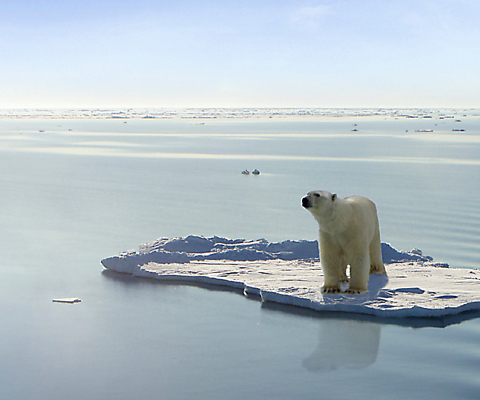
(Credit: Gerard Van der Leun via Flickr)
We’re living in a time of records. More renewable energy came on stream in 2015 than ever — 147 gigawatts, equal to Africa’s entire generating capacity — and investment in the sector broke records worldwide. Costs for producing solar and wind power have hit record lows. Portugal obtained all its electricity from renewable sources for four straight days in May — the longest achieved by any country — and Germany was able to meet 90 per cent of its electricity needs with renewable power for a brief period. Clean energy employment and job growth now outpace the fossil fuel industry by a wide margin.
That’s just a portion of the good news. Oil prices have fallen so low that some more damaging activities are becoming unprofitable, a record number of coal companies are going bankrupt or filing for bankruptcy, and fewer coal mines are operating in the U.S.
But are the good records enough to help us deal with the bad? Global average temperatures are hitting record highs every recent month and year, and atmospheric concentrations of greenhouse gases are rising steadily, to levels unheard of in human history. Arctic sea ice is vanishing at unprecedented levels, mass bleaching is killing the Great Barrier Reef, and record-setting droughts, floods, heatwaves and extreme weather are happening around the world.
As Prof. Stefan Rahmstorf of Germany’s Potsdam Institute for Climate Impact Research told the Guardian: “These are very worrying signs and I think it shows we are on a crash course with the Paris targets unless we change course very, very fast. I hope people realize that global warming is not something down the road, but it is here now and is affecting us now.”
The Paris Agreement, accepted in December by most nations, offered hope that world leaders are aware of this serious problem and know that unless we quickly employ a range of solutions — from renewable energy to reducing consumption to changing dietary and agricultural practices — humanity is at risk.
Despite overwhelming evidence for human-caused climate change, the fossil fuel industry continues to employ shady people and organizations to fool fearful and apparently blind followers into believing the problem doesn’t exist or isn’t serious enough to worry about. Their messaging follows a pattern: Spread a simplistic lie until it becomes so discredited that few people accept it and then move on to another simplistic lie.
The most recent from Canadian industry propagandists like Patrick Moore, Tom Harris (of the misnamed International Climate Science Coalition) and their pals at organizations like the U.S. Heartland Institute is that CO2 is not a pollutant, just a benign or beneficial gas that stimulates plant growth. It’s true CO2 is good for plants. So is nitrogen, but when it runs into waterways and the oceans, it pollutes them. Overwhelming scientific evidence proves that increased atmospheric CO2 is a major cause of global warming. The profound effects of that warming are already here, and new and frightening aspects are also coming to light, such as ocean oxygen depletion.
Recent showed the U.S. coal company owes money to a range of deniers and their organizations, including the also misnamed Calgary-based Friends of Science. It claims the sun and not human activity drives climate change (and that the world is cooling, not warming), a ridiculous assertion, often repeated by coal companies, that real scientists have thoroughly debunked. Extensive research shows coal, oil and gas interests have pumped huge amounts of money into these denial campaigns, all the while knowing that human-caused climate change is real and dangerous.
It’s good that deniers’ voices are being drowned out by evidence and rational arguments and that solutions are becoming better, cheaper and more readily available daily. But we no longer have time to allow compromised politicians, greedy industrialists and dishonest organizations to stall progress. We need record numbers of people to do all they can — develop solutions, write letters, sign petitions, talk to politicians, vote and take to the streets — to demand that governments, industry and society treat climate change with the seriousness it deserves.
Humanity’s fate depends on the choices we make today. We can’t let a polluting sunset industry and its minions block progress to a cleaner, healthier future.
Hey! Want more DSF? Join David Suzuki on Facebook

June 28, 2016
Atlas of Cumulative Landscape Disturbance in the Traditional Territory of Blueberry River First Nations, 2016
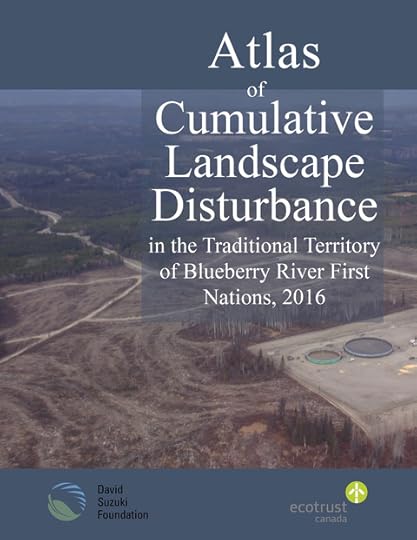
The Atlas of Cumulative Landscape Disturbance in the Traditional Territory of Blueberry River First Nations 2016 shows the extent of industrial intrusions in Blueberry River First Nations' traditional territory in British Columbia's Peace River region. Based on B.C. government data and drawing heavily on maps, the Atlas finds that a startling 73 per cent of the area inside Blueberry River First Nations traditional territory is within 250 metres of an industrial disturbance. This Atlas follows from a 2012 Atlas that revealed a stark picture of the significant scale of industrial development and associated cumulative impacts in the Peace region.
Hey! Want more DSF? Join David Suzuki on Facebook

David Suzuki's Blog
- David Suzuki's profile
- 247 followers



